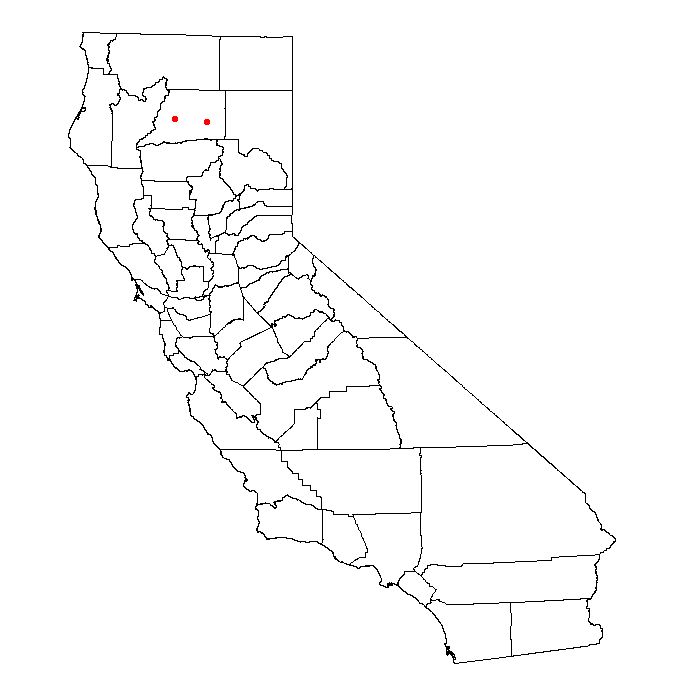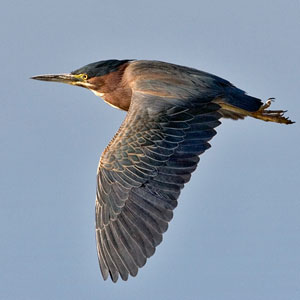
Home | About Us | Projects | Maps | Facts
NatureMapping Animal Facts
Green Heron
|
Green Heron (Butorides virescens) Other names: Green-backed Heron, Garcita verde (Spanish), Heron vert (French)Species Code: B058
The male and female are similar, but the female is slightly smaller, duller, and lighter. It can be very difficult to spot as it stands motionless waiting for small fish to approach within striking range. It frequently announces its presence by its loud squawking. 
Calls:
The flight or alarm call is an explosive "skeow." Also make series of "kuk-kuk-kuk-kuk" notes. Range/Habitat: Green Herons inhabit small freshwater wetlands, ponds, and stream-sides linded with thick vegetation. During the winter, they frequent coastal areas and mangrove swamps. Green Herons were not reported in Washington until 1939. Scattered summer observations were reported after 1939 in western Washington and the first nest was discovered in 1960.
Click the range map to learn more about the distribution of
Green Herons in California.
Diet: Green Herons are opportunistic feeders, with fish as the primary food source. Crayfish and other crustaceans are a regular source of food. They also hunt for aquatic insects, grasshoppers, frogs, rodents and snakes. Behavior: The Green Heron is one of the few tool-using birds. It commonly drops bait onto the surface of the water and grabs the small fish that are attracted. It uses a variety of baits and lures, including crusts of bread, insects, earthworms, twigs, or feathers. Nesting: These birds nest in trees, usually near water. Green herons do best when they are free of human disturbance and have foraging areas near by. Unlike most herons, the Green Heron does not typically nest in large colonies. The male starts the nest, bringing long, thin sticks to the female who finishes building the nest. Both parents incubate the 3 to 5 eggs for about 19 to 21 days. Once the young birds hatch, both parents feed them by regurgitating food. Both adults help brood the young for about three weeks. At about 16 to 17 days, the young climb about near the nest, and they first start to fly at 21 to 23 days. The parents continue to feed the young for a few more weeks until they fledge after about 30 to 35 days. Fledge - feed, care for, and rear young birds for flight.
Did you know?

Green Heron photo by Alan Wilson
More information: |

